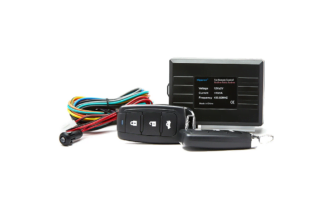In today’s interconnected world, safeguarding your home has become a top priority for homeowners. Often, you may wonder, “Is there a way to monitor my property at all times?” With the evolution of smart technology, the most effective solution is smart security cameras. Here is a comprehensive guide on installing smart security cameras, which stand out as advanced tools in creating a safe and secure living environment for families.
Step 1:
Traditionally, security assessment involves analyzing the security of an environment and determining necessary measures to enhance it. Start by thoroughly reviewing potential threats and risks that the solution will safeguard against. Consider factors like the area size, number of entry points, and vulnerable areas. Conducting self-checks will help determine the right number and strategic locations for installing smart security cameras to ensure comprehensive coverage.
Step 2:
Choosing the Best Smart Security Camera
With a wide array of smart security cameras available, each offering distinct features, selecting the best one can be overwhelming. Factors to consider include image quality, night vision capabilities, motion detection, and compatibility with your smart home system. Leading security camera brands like Arlo, Ring, and Nest offer affordable options that are easy to install.
Step 3:
Plan camera placements to cover different areas from various angles, either at ground level or from an elevated perspective based on the setting. Ensure cameras are strategically positioned for optimal performance. Select locations with a high vantage point overlooking entrances, pathways, and high-traffic areas. Consider aspects like camera height, angle for capturing clear images, and any obstructions that may affect the camera’s view.
Step 4:
Establish a connection to the router. Wireless smart security cameras rely on a stable network for connectivity and control. Ensure your Wi-Fi router can support the required number of connected devices and provides adequate signal strength in camera placement areas.
Step 5:
Proceed with the installation of smart security cameras. Follow a professional guide for a seamless setup using appropriate tools and techniques. Avoid DIY installation if you lack familiarity with the installation procedures, as errors may occur. Seek professional assistance if faced with challenges during installation.
Step 6:
Configure navigation settings, disable pedestrian and cycle detectors, and adjust false triggering levels within the camera settings. After completing the hardware setup, fine-tune the camera settings to customize motion detection, alarms, and notification preferences. Integrate the camera with other smart home devices for enhanced security and seamless operation.
Step 7:
Conclude the process by testing and optimizing the system for maximum effectiveness. Conduct thorough checks to ensure the system functions as expected, especially if relying on it for 24/7 monitoring. Integration with smart home systems enhances control and coordination between security cameras and other smart devices like voice assistants, smart locks, and lighting systems.
Smart security cameras have gained popularity worldwide due to their numerous advantages over traditional cameras.
Benefits:
Enhanced Home Security:
Smart security cameras serve as a deterrent to potential intruders and allow homeowners to monitor their property remotely.
Convenience and Accessibility:
Remote access via smartphones and web platforms enables convenient monitoring of security cameras from anywhere.
Customizable Alerts:
Motion detection and alert features ensure prompt notifications of any detected activity.
Continuous Recording and Cloud Storage:
Modern smart cameras offer round-the-clock recording and cloud storage for easy access to recorded footage.
Pricing and Considerations:
The cost of smart security cameras varies based on features, camera quantity, and brand. Entry-level to mid-level systems range from $100 to $200 per camera, while professional systems with multiple cameras and monitoring services cost over $500.
Before finalizing the installation, conduct test runs to ensure optimal camera performance. Adjust settings like tilt, zoom, angle, and resolution for the best results.
Smart Security Cameras for Home Use and Their Advantages
Remote Access and Monitoring:
Smart security cameras provide remote access through mobile apps or web interfaces, offering real-time monitoring and security.
Two-Way Audio:
Some cameras feature two-way audio, allowing users to listen and speak through the camera, enhancing security measures.
When considering the cost of installing smart security cameras, factor in device purchase, maintenance, cloud storage, subscriptions, and professional installation fees.
Conclusion on Installing Smart Security Cameras
Following the steps outlined in this guide for installing smart security cameras can significantly enhance home security and provide peace of mind. By considering the advantages, costs, and features, you can make informed decisions to protect your property and loved ones effectively. Proper planning and well-executed installation of smart security cameras are valuable investments in safeguarding your home and family.





